Today, we get a look at the AMD Zen 3 architecture. This is the architecture is AMD’s updated 7nm designs. While Zen 2 brought improvements with the introduction of 7nm and the architecture of its chips, the Zen 3 is more of a 7nm PCIe Gen4 refinement generation of product. We expect the 5nm generation to be where we see the next major architectural leap. During today’s launch, the company talked AMD Zen 3 and its first Zen 3 based products, the AMD Ryzen 5000 series.
AMD Zen 3
It is no secret in the industry that AMD has been making inroads with its Zen architecture since 2017. First, we had the original Zen architecture that brought us the first-generation AMD Ryzen chips as well as the AMD EPYC 7001 “Naples” generation. In 2019 we got an update to Ryzen 3 that used the same Zen 2 that powers the AMD EPYC 7002 “Rome” generation processors. Now, we have the Zen 3 launch that will power the fourth generation of Ryzen and the AMD EPYC 7003 series codenamed “Milan.”
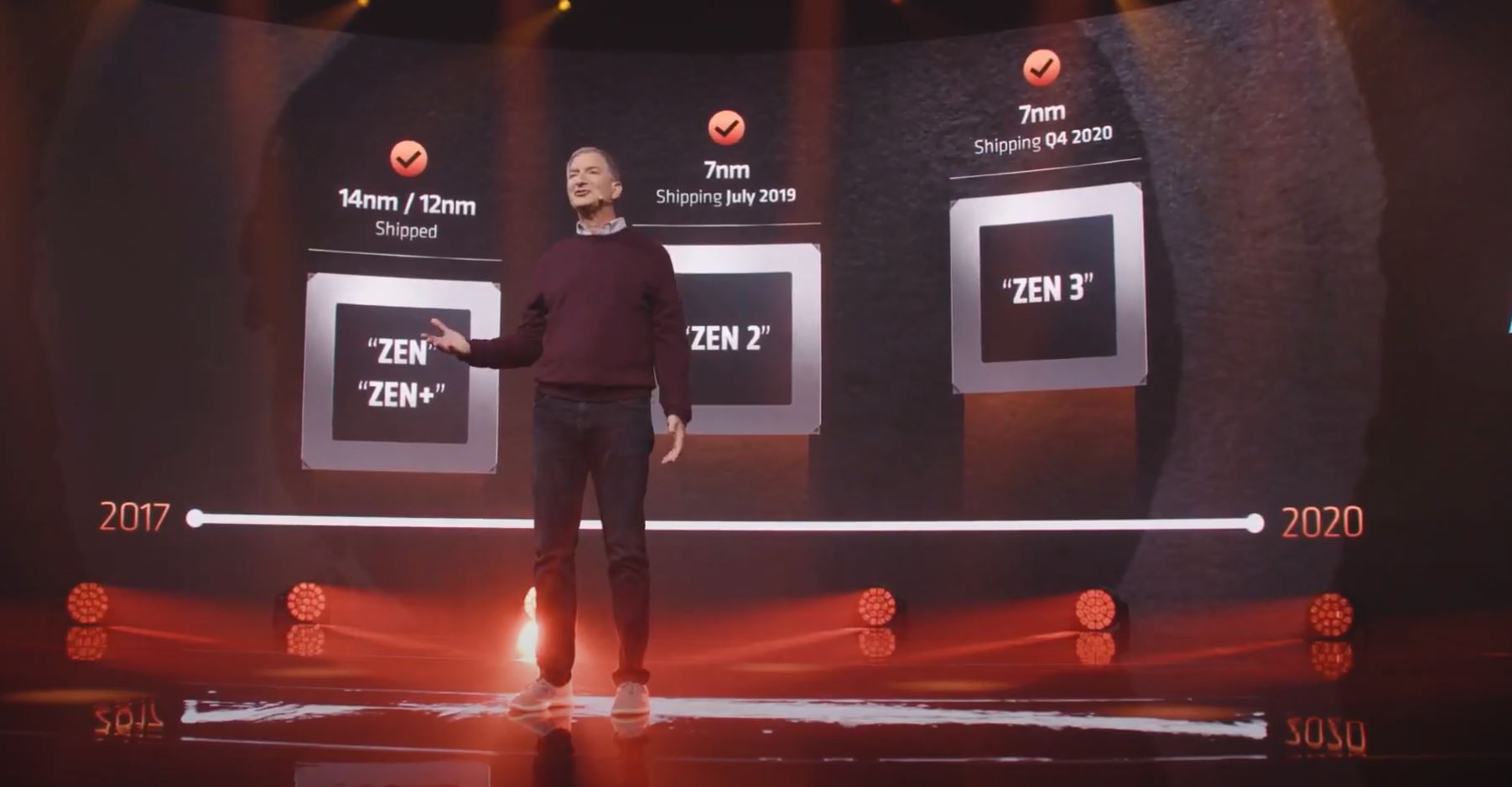
While we saw a lot of chip/ platform level changes with Zen 2, Zen 3 is more focused on re-architecting cores for increased performance.
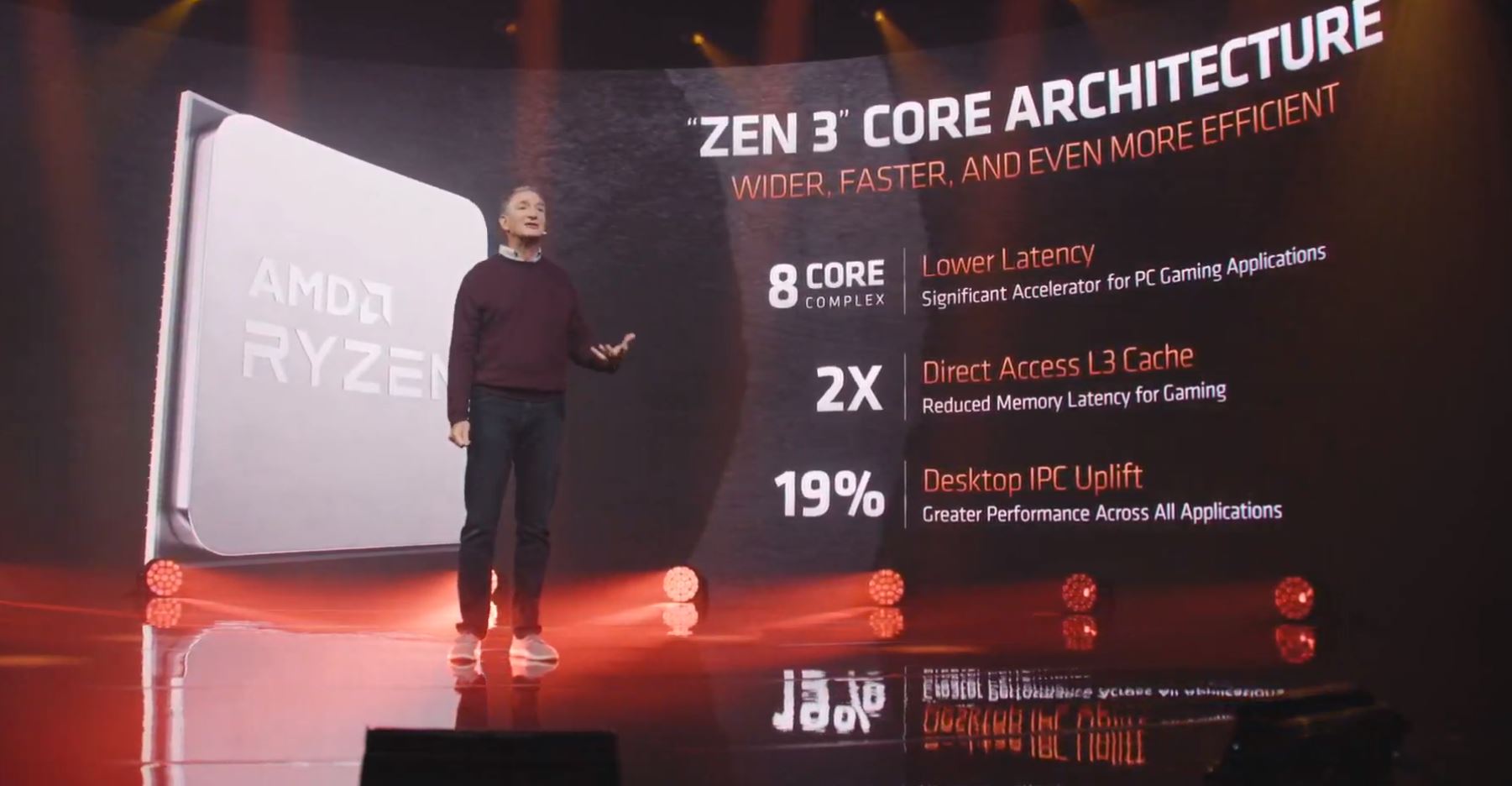
A big part of this is a claimed 19% higher instructions per clock (IPC.) In the generations leading up to Ryzen and Zen, AMD trailed Intel by a notable margin in IPC performance. Even at the same clock speeds, AMD had been doing more work. AMD is basically showing that they were behind Intel with the 2017 Zen architecture launch, they pushed to about even with Zen 2, and will be ahead with Zen 3 thanks to generational IPC improvements. In our server workload testing, this feels directionally accurate. We do not think of AMD EPYC Rome and Intel Xeon parts at the same clock speeds of being substantially different to the tune of 20-30% on most workloads. There are some workloads that favor each, but it is fairly close with Cascade Lake and Zen 2.
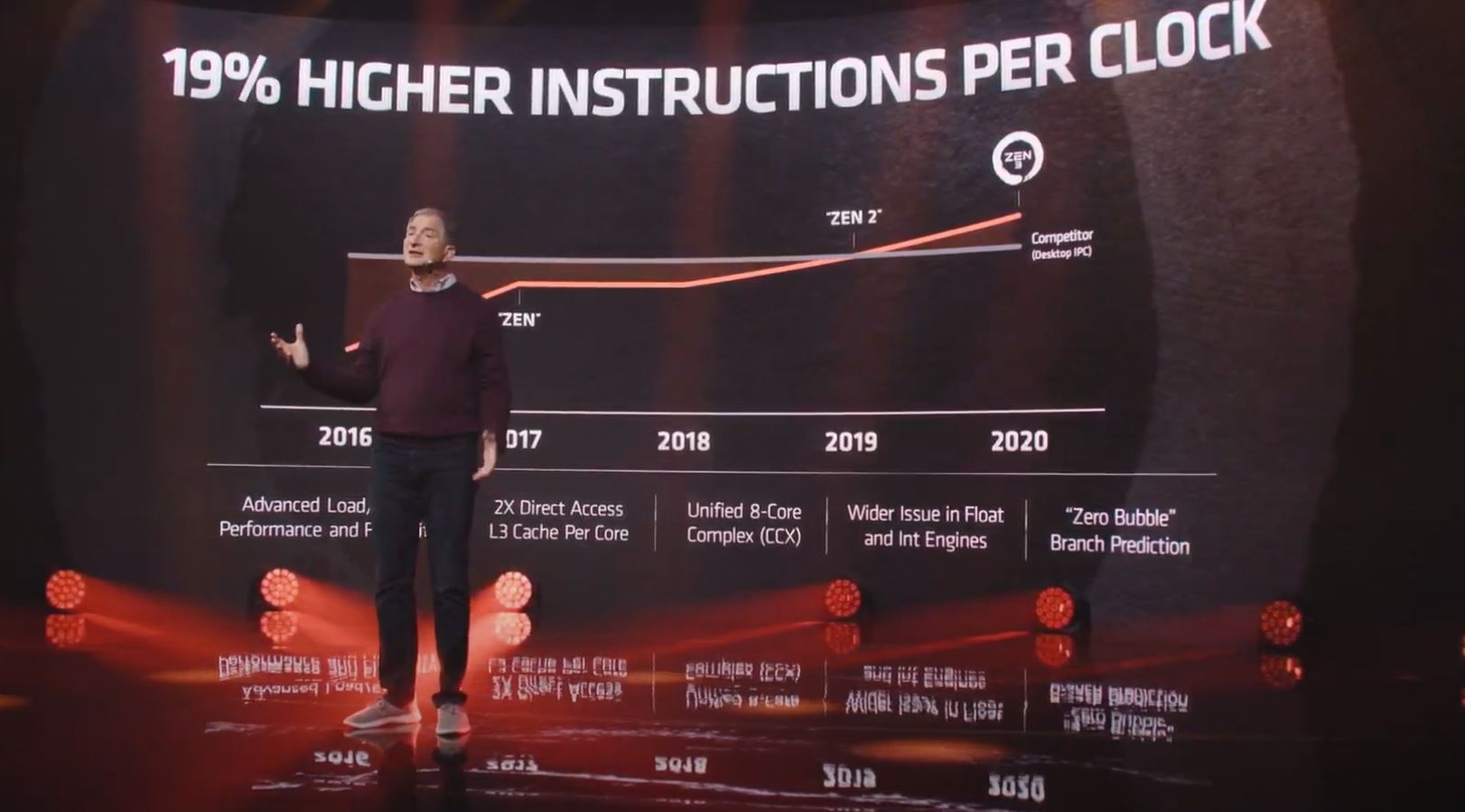
AMD provided a bit of a breakdown on where the performance gains are coming from. A quick note here is that a lot of this is not due to raw compute units increasing. Instead, most of these gains are related to more efficiently priming and moving data into and around the chip.
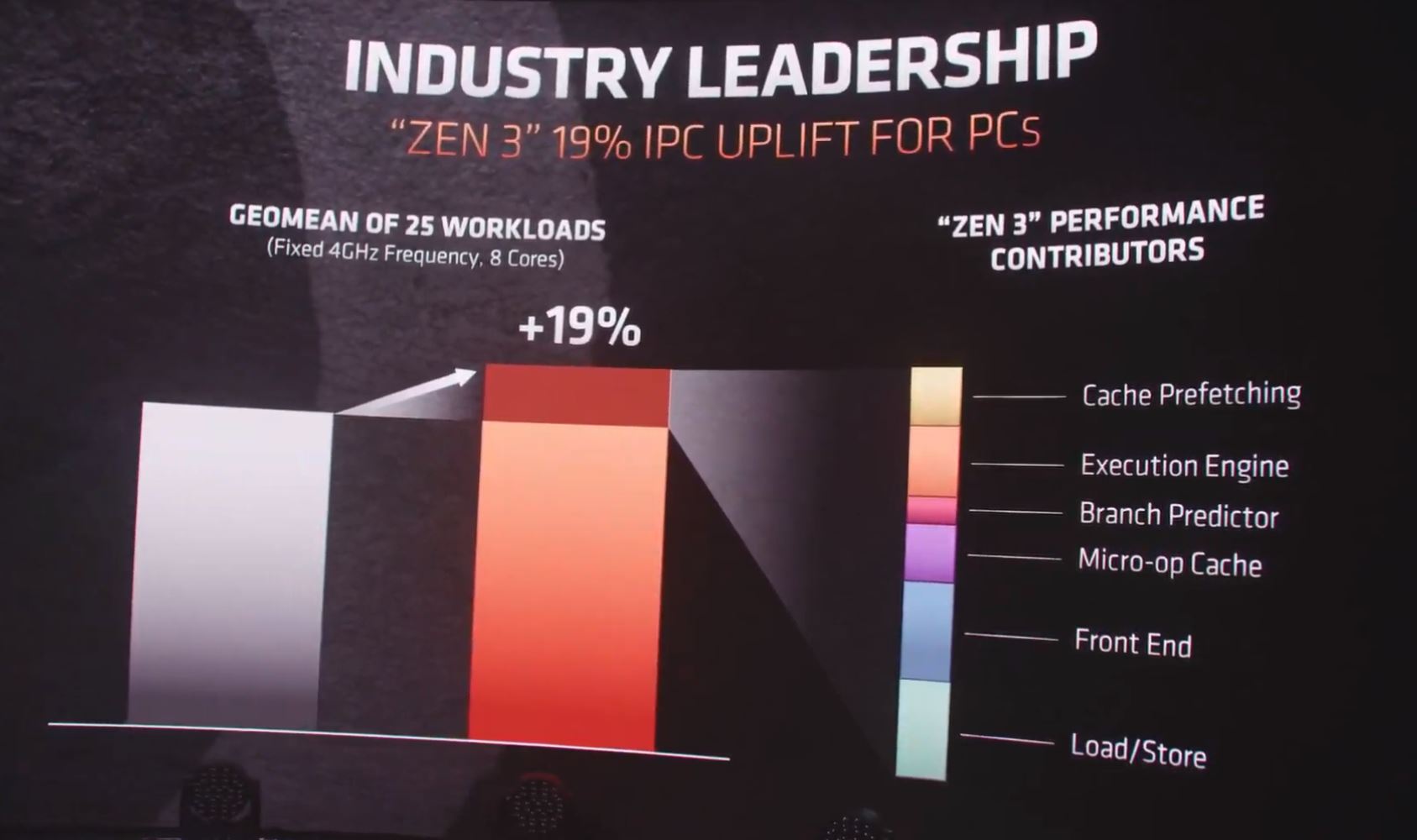
A big part of that is the new Zen 3 architecture. AMD Zen 2 has its compute die split into two hemispheres. Each set of four cores shares 16MB of L3 cache with two sets on the die.
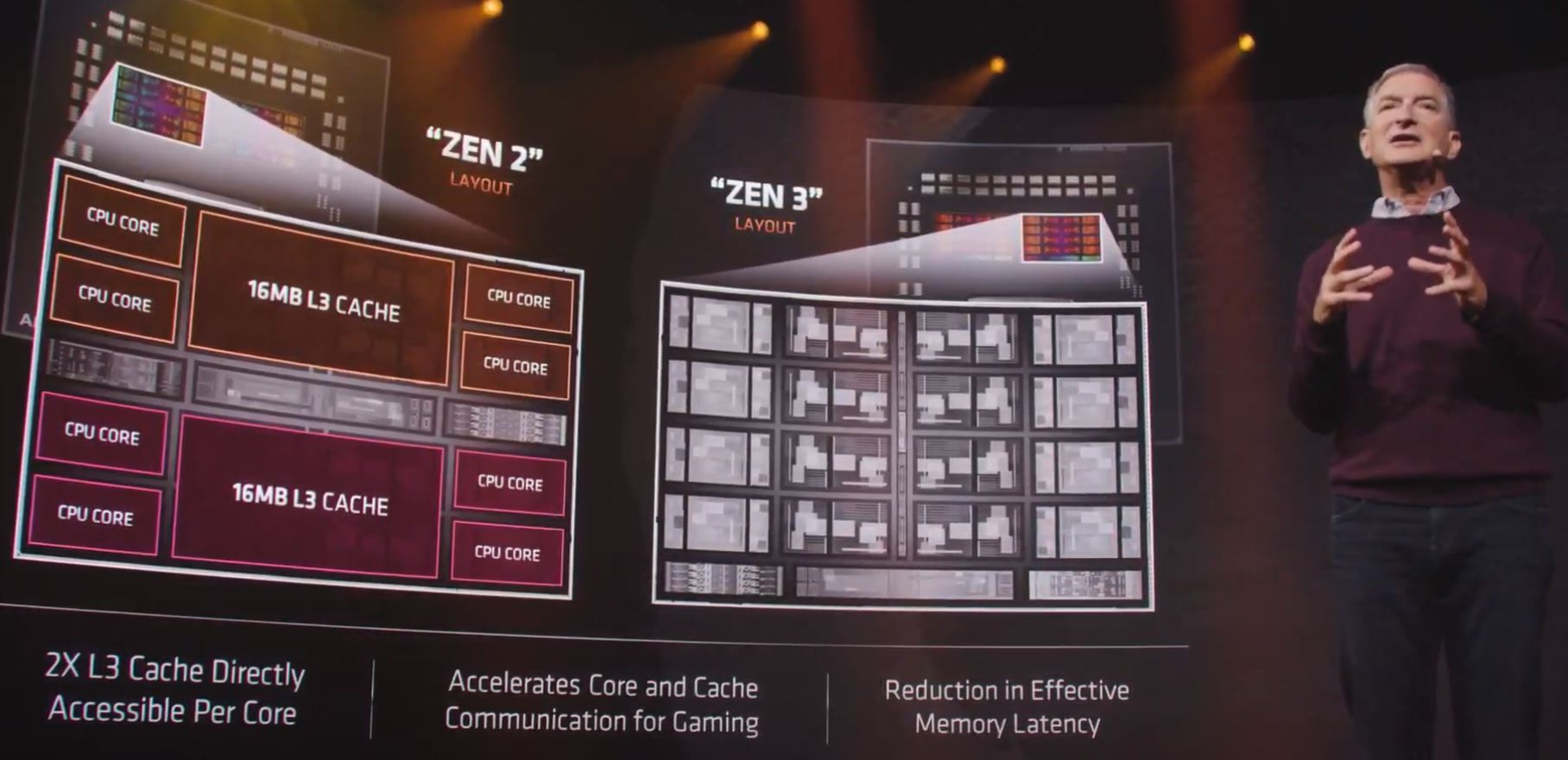
With Zen 3, we get 32MB of shared L3 cache among all eight cores. That increases efficiency since not all threads executing on each core require the same amount of cache. perhaps the bigger impact is that with the shared cache, we no longer cross the hemisphere boundaries on Zen 2 which are expensive operations.
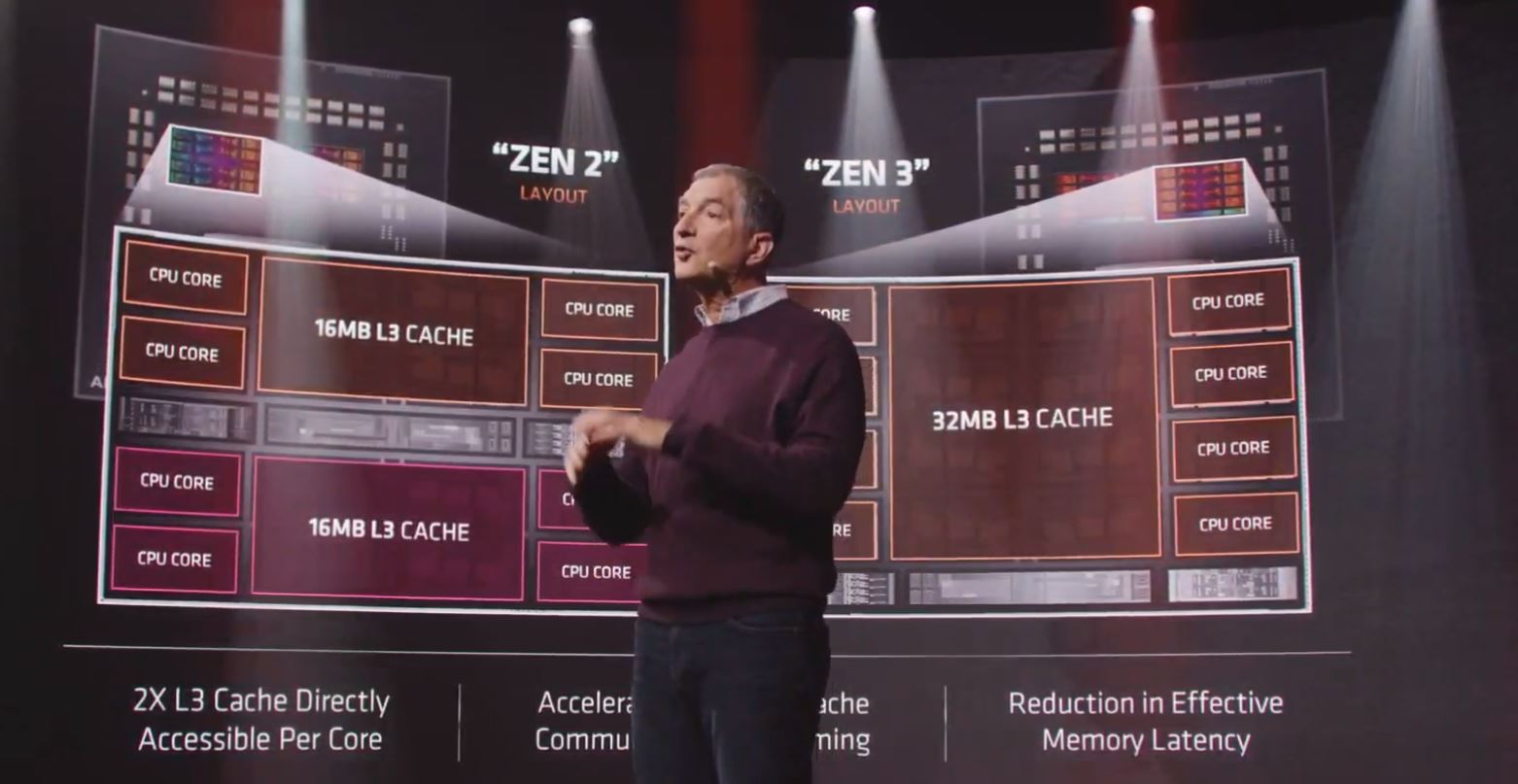
Of course, we expect the new Zen 3 architecture in future AMD EPYC 7003 Milan CPUs and hopefully a new Threadripper series in the future, but today AMD was focused on the mainstream Ryzen launch for Zen 3.
AMD Ryzen 5000 Series
The AMD Ryzen 5000 series is set to use the same AM4 package as the Ryzen 3000 series, with an I/O die as well as two compute dies. As we saw in the Zen 3 architecture announcement, the Zen 3 compute dies feature 8 cores and 32MB of L3 cache like the Zen 2 dies, but with a more unified configuration.
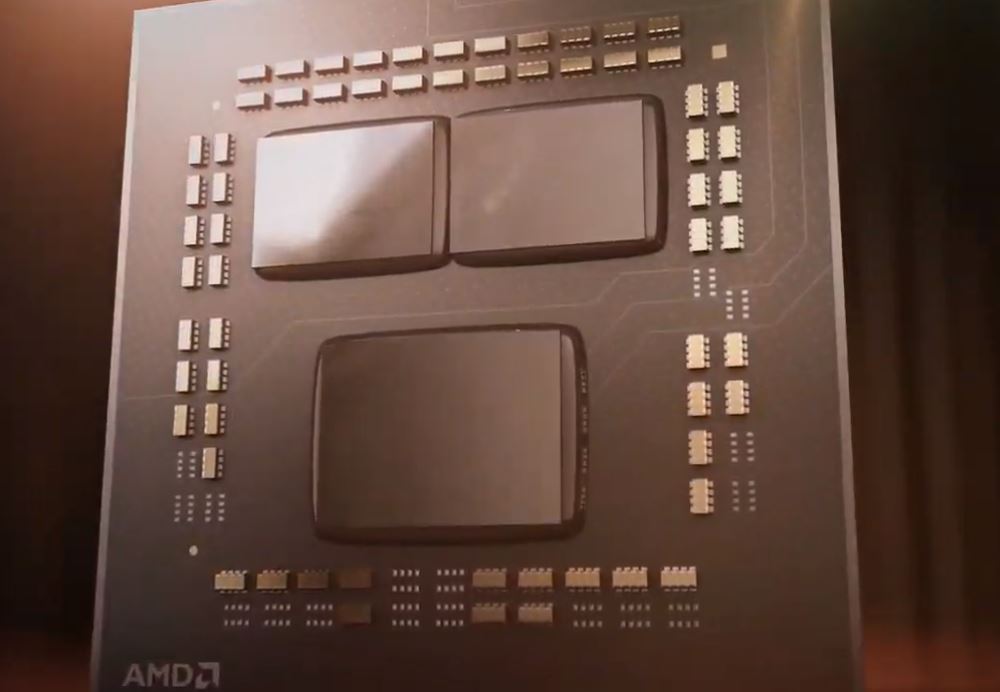
The first SKU that AMD announced is the AMD Ryzen 9 5900X 12 core / 24 thread part. AMD uses 70MB of cache here as a combination of 64MB L3 cache (32MB on each compute die) and 6MB of L2 cache (512KB/ core.) One of the interesting points here is that AMD is saying it can hit 4.8GHz boost clocks. AMD is simultaneously claiming IPC improvements over Intel. As a result, AMD is effectively saying that even if Intel has slightly higher clock speeds, that their Ryzen solution will still perform better doing more per clock. For the rest of the market, the key takeaway here is that AMD and Intel are in the same ballpark of clock speeds. AMD also showed off a 3.7GHz figure which we assume is a base frequency.
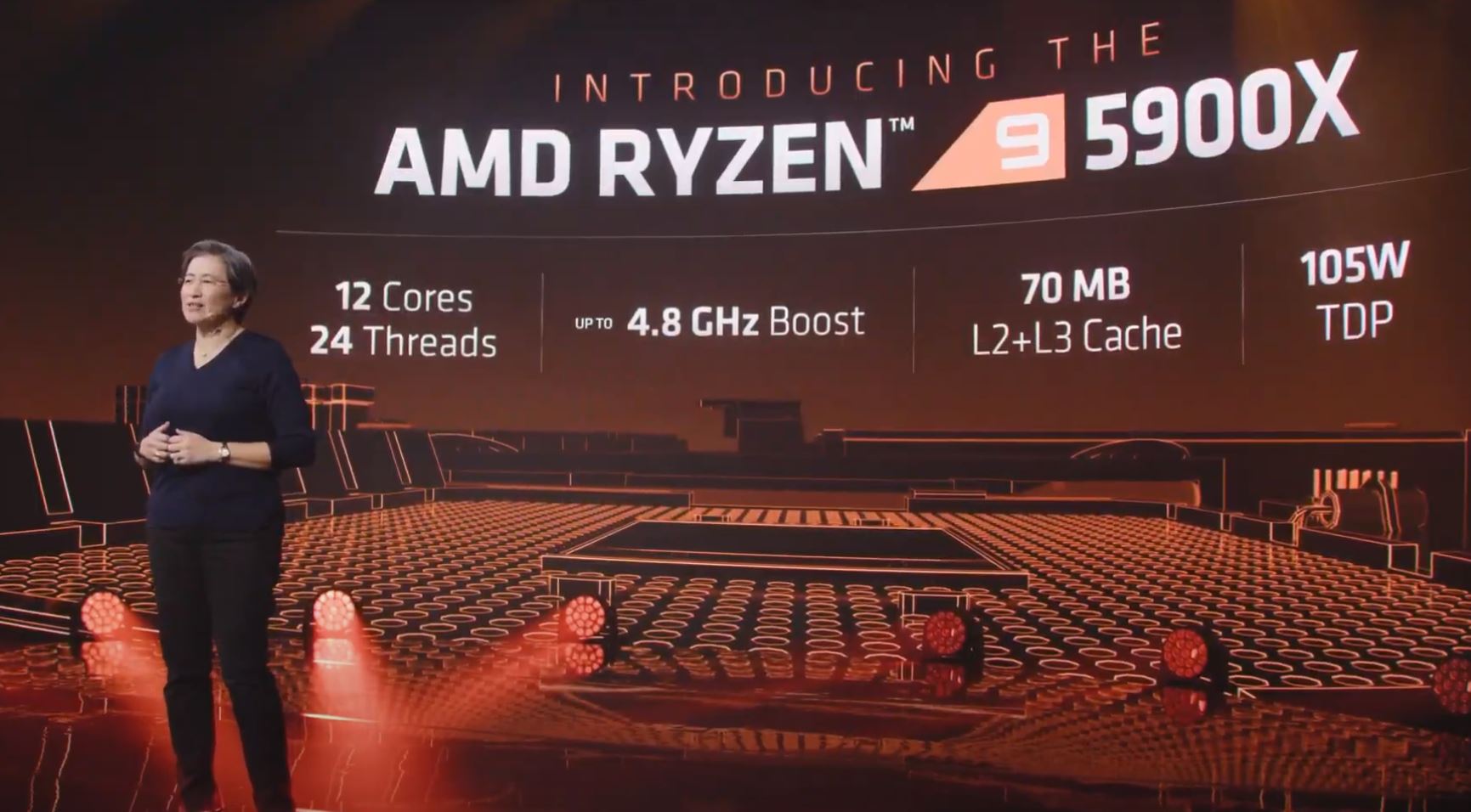
AMD is launching these CPUs on November 5, 2020. Here is the pricing/ specs for the three mainstream models:
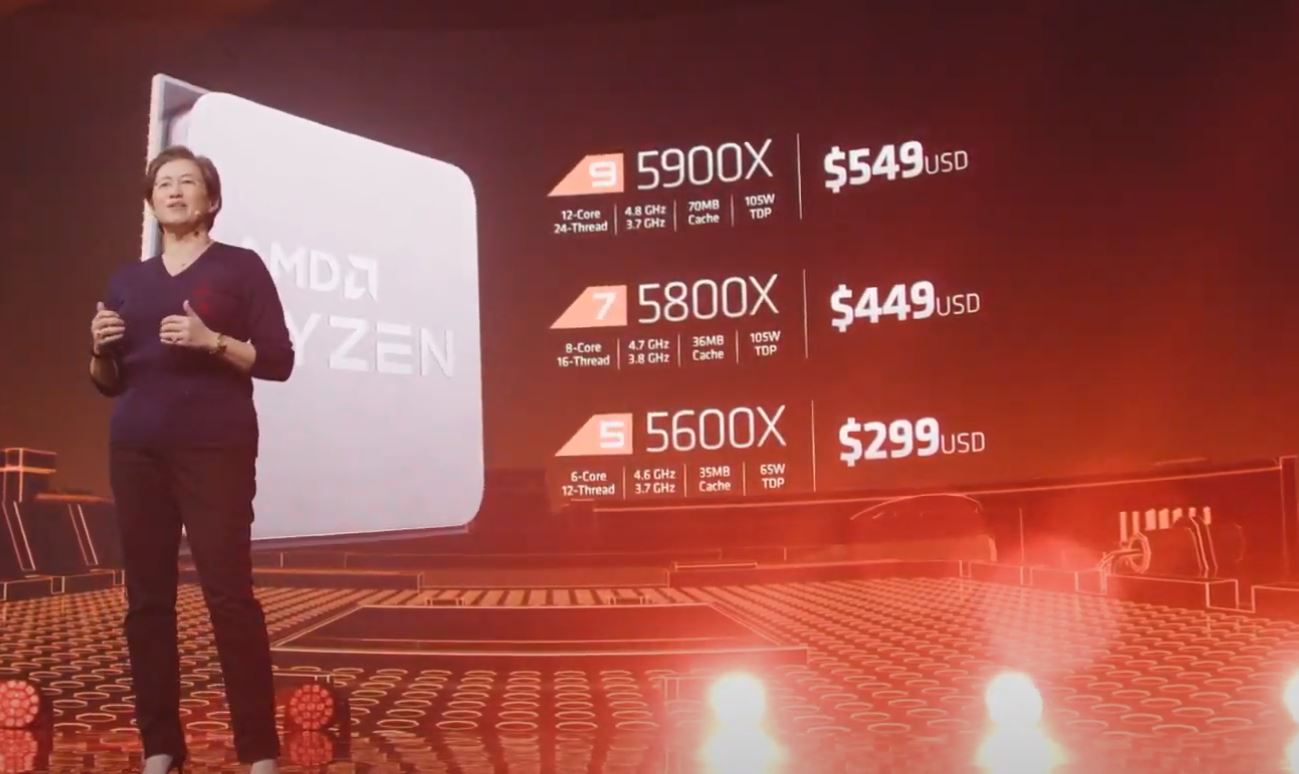
As we would expect, AMD also has a 16-core offering using the full eight cores from each compute die. At $799 we have the AMD Ryzen 9 5950X which is a 16 core/ 32 thread part with up to a 4.9GHz boost clock.
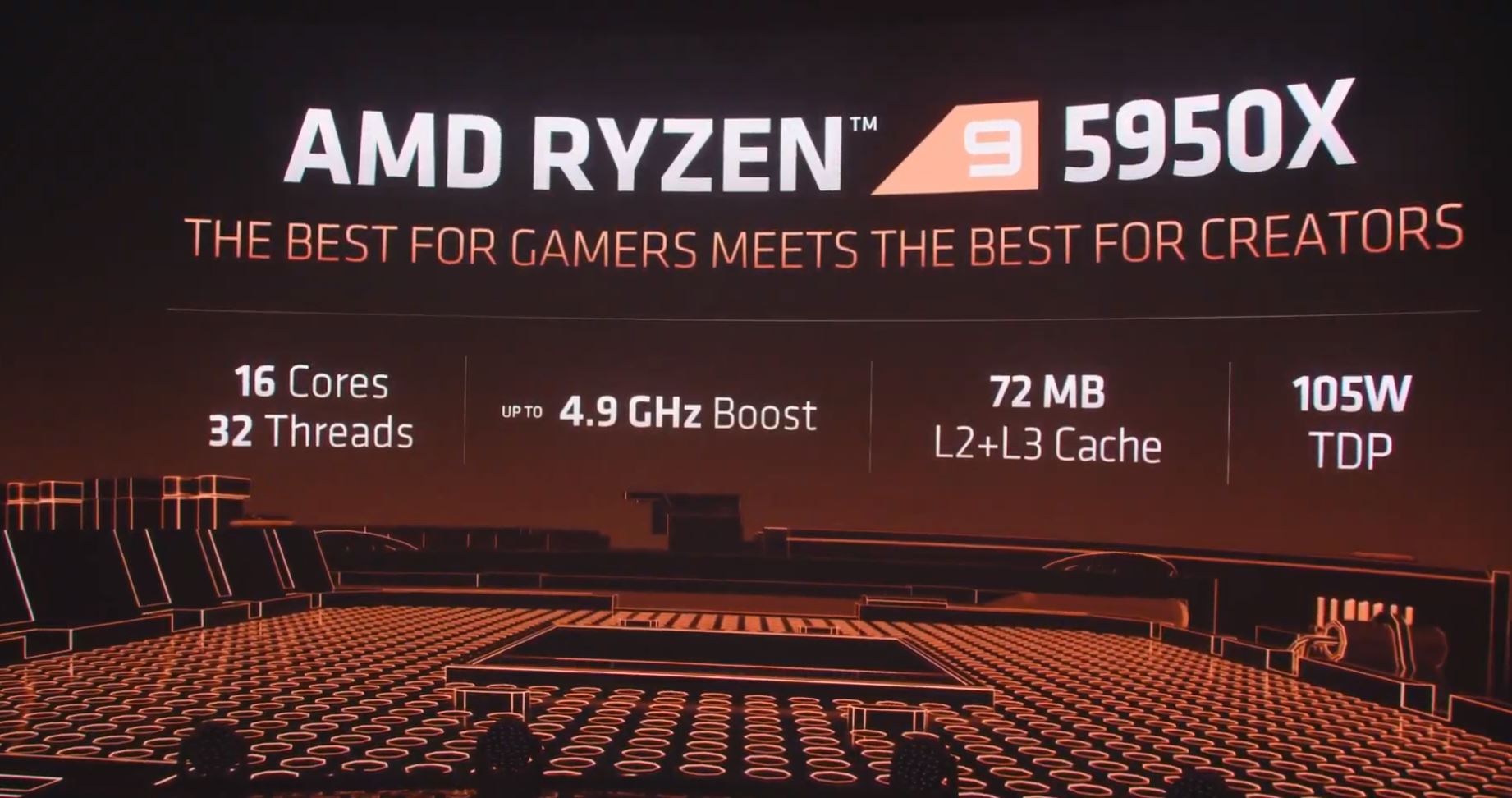
This is likely not a launch that is going to get Ryzen 9 3950X users to upgrade to the 5950X, but it will provide even more incentive to upgrade and new performance frontiers for new systems.
AMD Radeon 6000 Series
At the Zen 3 launch event, we did not get formal Milan details, but we did get another teaser. Later in October we will get the AMD Radeon 6000 series nicknamed “Big Navi.”
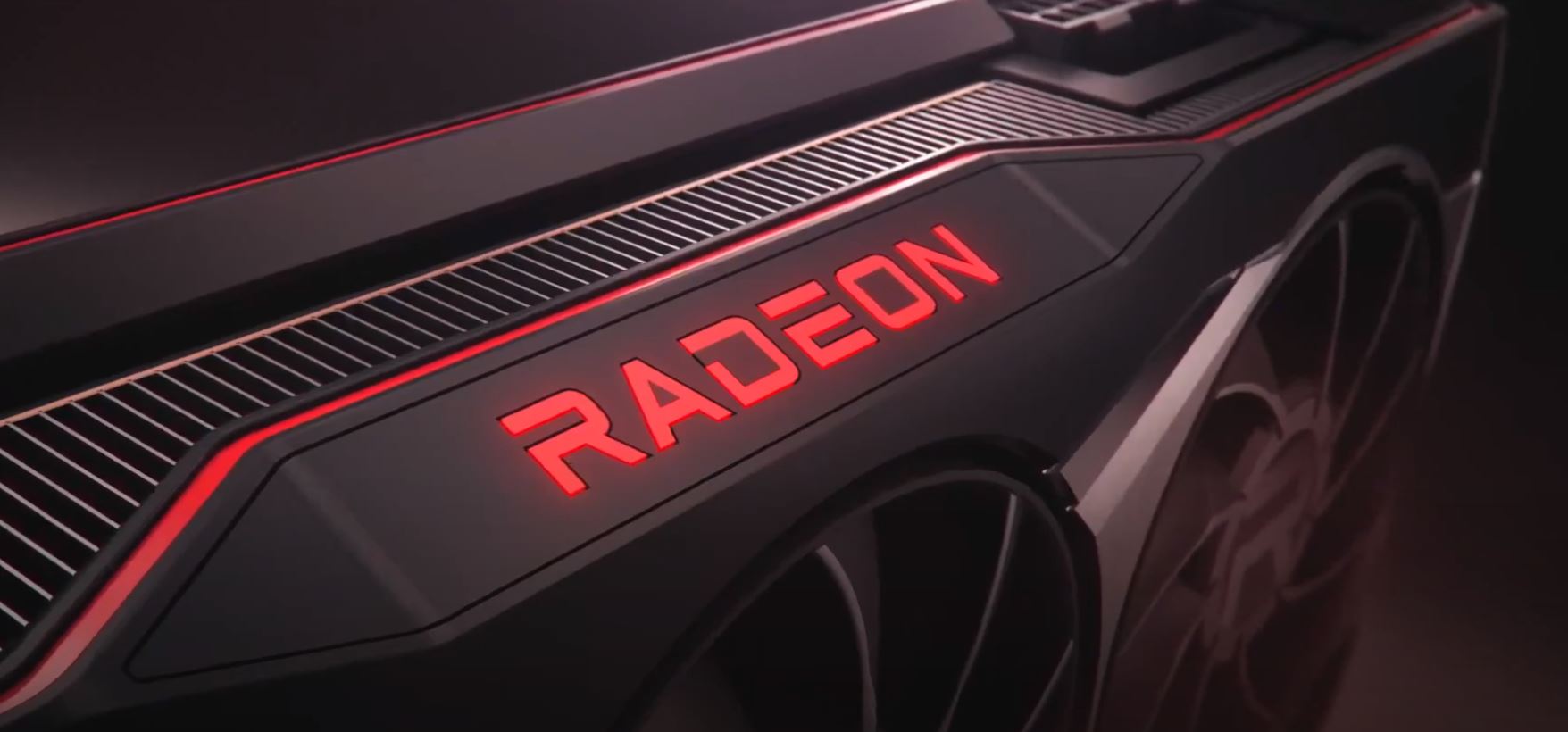
If the cooling configuration, with its triple fans, is any indication, this is set to be a high-performance part.
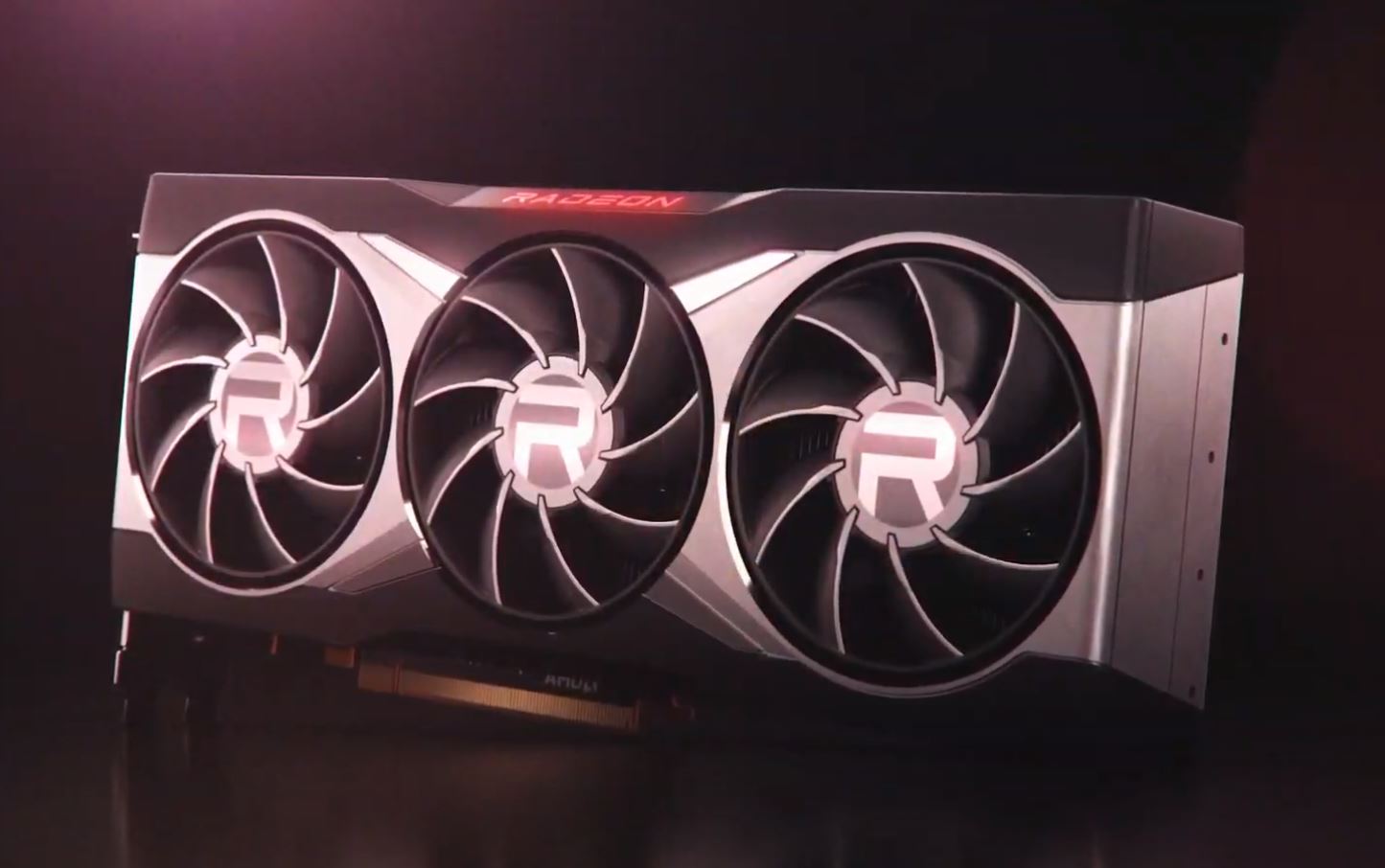
Frankly, we need a new AMD Radeon launch. The NVIDIA GeForce RTX 3000 Series Launch has seen quite a few obstacles. On a recent call, Jensen Huang, NVIDIA’s CEO said that the NVIDIA GeForce RTX 3000 series will continue to see supply constraints for the remainder of 2020. As a result, if AMD has competitive performance, they have an opportunity beyond the performance story since they have an opportunity to take share based on supply as well.
Final Words
AMD did not discuss the EPYC 7003 “Milan” series in today’s announcements. We expect Zen 3 core architecture changes to be at least as, if not more important in the server space. We also expect AMD has a few other features in store for Milan beyond the compute die changes mentioned today.
Stay tuned to STH for more on AMD’s products.

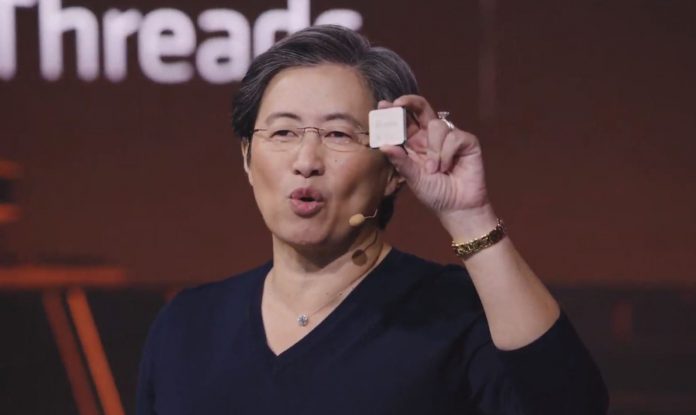



No mention of Milan launch and availability… 2021?
Wow… $799 for a Ryzen 9 5950X CPU. That right there is why I’m still using a refurbished Pentium Dual from 2007 running Windows 7 Home Premium. The cost of new technology is way beyond reason. At this rate I’ll never benefit from any of the new technology from either AMD or Intel because it’s far too unaffordable. Even the cheapest low-end processor SKUs are too expensive to be reasonable.
I’m not sure what the supply situation is going to be like with not only Ryzen 5000 but also Big Navi and all the Console chips coming out of TSMC and Samsung apparently at full tilt with NVidia. I was looking forward to some gaming over the Christmas days but I probably have to wait till the new year to get a new rig.
Mr Beets, stop being a troll.
The 07 year dual core was approximately $150 or so, the bottom of the barrel was maybe $89 if I remember right.
Likewise, the quad core extreme was actually around $1500 at that time.
Compairing your broke down dual core to the price point of the highest end processor on the current market, and then whining about the price is ridiculous. Especially when you compair apples to apples, top end vs top, and realize that prices are literally HALF of what they used to be.
That you’re still running windows 7 which has been out of support for almost a whole year tells everything. There is the door sir, get out.